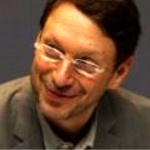Renowned art historian and well-published author Professor James Elkins will deliver the second MA Asian Art Histories Annual Lecture on 17 April 2013.
Unresolved Problems in Global Art History
Distinguished Speaker : Professor James Elkins
Moderator : Lee Weng Choy
Wed 17 April 2013
6.30pm-9.00pm
Block F Level 2 #F201
LASALLE College of the Arts
1 McNally Street
Free admission (on a first-come first-served basis)
RSVP: angie.wong@lasalle.edu.sg
A reception will follow
 This is a speculative lecture on current impasses in the practice and theorization of art history worldwide. The global practices of art history are the subjects of a rapidly growing literature, but fundamental questions remain unresolved. Are there indigenous discourses or traditions of art history, theory, or criticism, that are different from the Euramerican model that is currently spreading around the world? How can local, native, indigenous, and other practices be best represented in the international art world? Professor Elkins will consider several options based on work done in the last three or four years, taking examples from a wide range of contexts, including the current attempt to make ink painting the exemplary Chinese contemporary art; problems of the Westernness of art historical writing, and attempts to return to “indigenous” forms of art historical writing.
This is a speculative lecture on current impasses in the practice and theorization of art history worldwide. The global practices of art history are the subjects of a rapidly growing literature, but fundamental questions remain unresolved. Are there indigenous discourses or traditions of art history, theory, or criticism, that are different from the Euramerican model that is currently spreading around the world? How can local, native, indigenous, and other practices be best represented in the international art world? Professor Elkins will consider several options based on work done in the last three or four years, taking examples from a wide range of contexts, including the current attempt to make ink painting the exemplary Chinese contemporary art; problems of the Westernness of art historical writing, and attempts to return to “indigenous” forms of art historical writing.
Professor James Elkins is currently E.C. Chadbourne Chair in the Department of Art History, Theory, and Criticism. A prolific writer, some of his books focus exclusively on fine art (What Painting Is, Why Are Our Pictures Puzzles?). Others include scientific and non-art images, writing systems, and archaeology (The Domain of Images, On Pictures and the Words That Fail Them), and some are about natural history (How to Use Your Eyes). His current projects include an edited book series called the Stone Art Theory Institutes, and an edited book series called Theories of Modernism and Postmodernism in the Visual Art. His most recent book is What Photography Is, written against Roland Barthes’s Camera Lucida.

